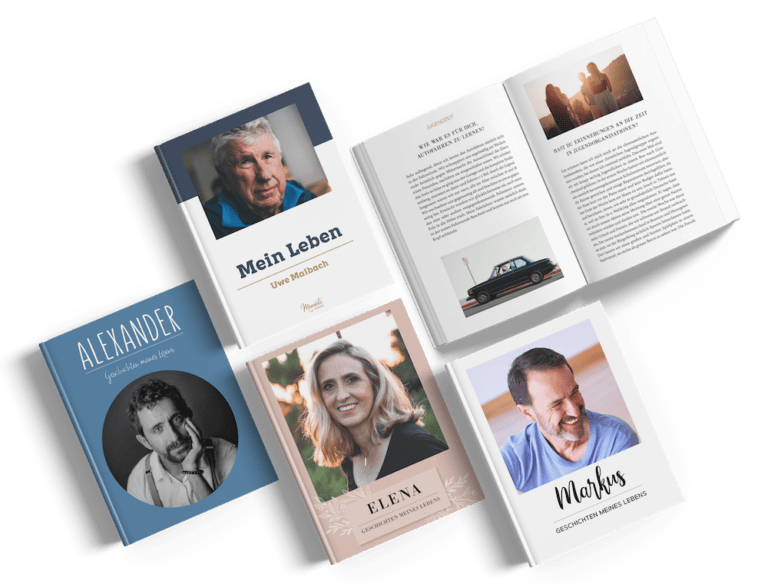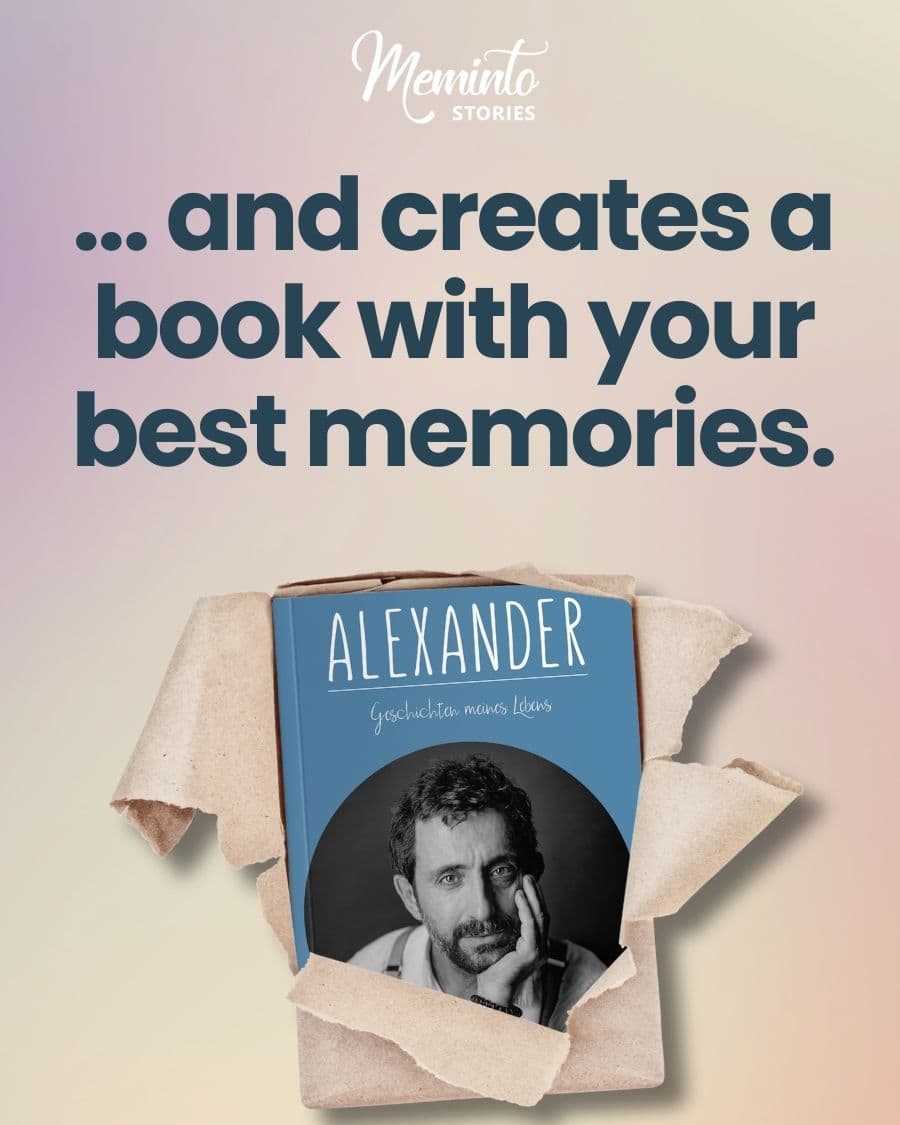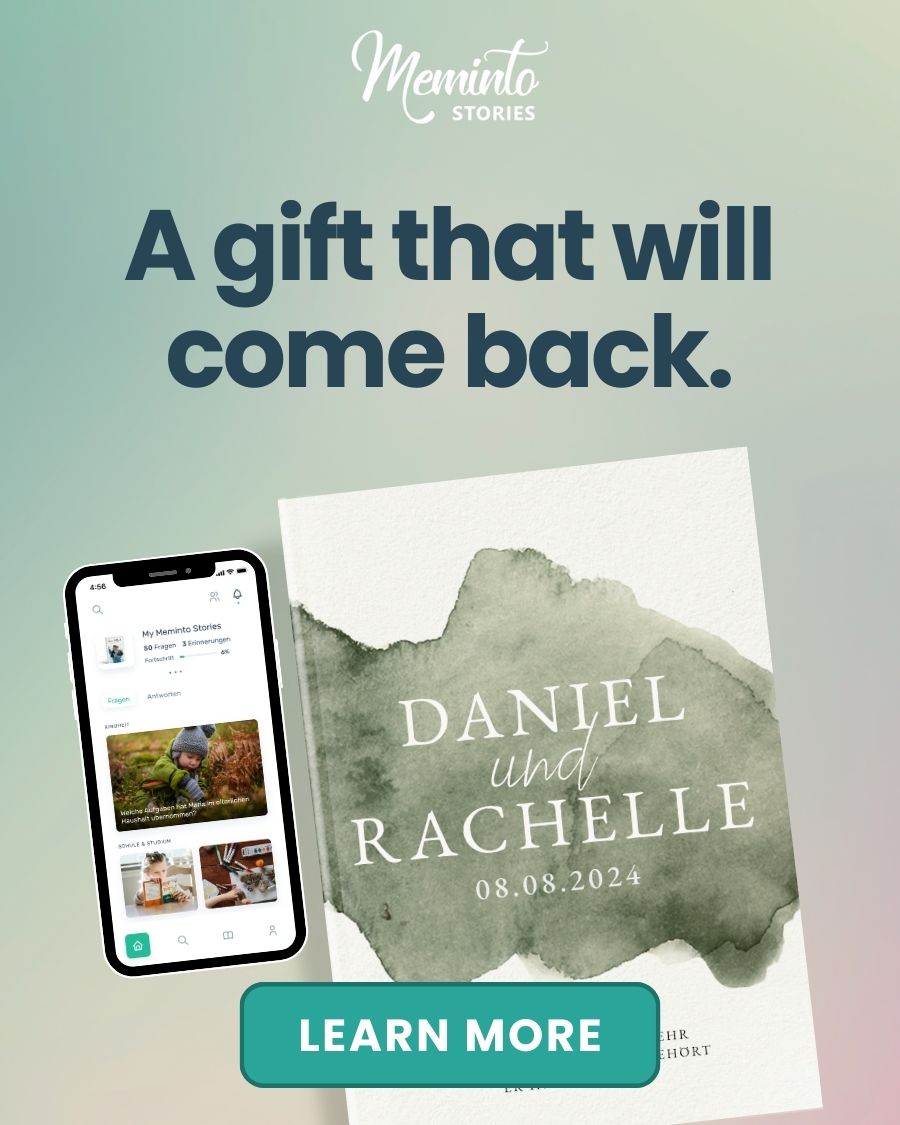Writing your life story might feel like staring at a blank page, not knowing where to begin—kind of like standing at the edge of a vast ocean, wondering which wave to ride first. But here’s the thing: your story matters. Every laugh, every tear, every “I can’t believe I survived that” moment—it all deserves to be remembered.
Think about it: how many times have you wished your grandmother had written down the way she fell in love? Or how your mom navigated life when she was your age? Your words could be that gift to someone else—your daughter, your best friend, or even just you, years from now, looking back and seeing how far you’ve come.
This isn’t about writing a perfect autobiography; it’s about capturing the messy, beautiful, real you. It’s about those moments that made you, the lessons that shaped you, and the love that carried you through. So don’t overthink it. Start with the memories that make your heart beat a little faster—the ones that still make you laugh, cry, or roll your eyes.
Your story is already incredible. Now it’s time to put it into words.
Here’s how to get started:
- Why Write Your Life Story?
Writing helps you reflect, heal, and connect with your identity and family history. It’s also a way to share your values and legacy.
Steps to Write Your Story
-
Set Goals & Audience: Decide if your story is for personal reflection, family, or a wider audience.
- Organize Materials: Gather photos, journals, letters, and documents.
- Choose a Style: Autobiography (full life), memoir (specific theme), or essays (individual reflections).
- Plan Your Story: Create a timeline, find recurring themes, and map memories for structure.
- Write & Edit: Use your natural voice, add sensory details, and combine facts with emotions. Edit for flow and clarity.
- Publishing Options:
Self-publish for control or go traditional for professional support. Save your work digitally and in print for future generations.
Start small: Write one memory a week or focus on key milestones. Your story matters – take the first step today.
How to Write a Memoir: 4 Things You Need
You are currently viewing a placeholder content from YouTube. To access the actual content, click the button below. Please note that doing so will share data with third-party providers.
Step 1: Getting Started
Start by crafting a narrative that resonates with your audience. This step lays the groundwork for your entire memoir.
Set Your Goals and Identify Your Audience
Clarify your purpose and determine who you’re writing for. This will influence everything from your tone to the stories you include.
Consider your audience:
- Personal reflection: A private project focused on self-discovery.
- Family legacy: A collection of stories and lessons for future generations.
- Public readership: A wider audience interested in your life experiences.
"Voice is the lens through which you write. It’s the sum of your experiences, values and beliefs, interests, personal preferences, and beyond." – Kristen Kieffer
Gather and Organize Your Materials
Collect all the resources that will help shape your story. Use both digital tools and physical systems to stay organized.
"Since written communication is an important foundation, we’re also heavy users of Google Docs. For example, we create highly organized Docs for meetings, allowing everyone to collaborate and add notes instantly." – Dave Stott, Chief Information Officer, OXA
Key materials to collect:
- Family photos
- Personal journals
- Important documents
- Letters and emails
- Audio recordings
- Movies
- Memorabilia or objects
Set up digital storage solutions like Google Drive to keep files secure and easy to access. This approach has been praised by organizations like Atlantic Housing Foundation for its efficiency in managing materials and avoiding data loss.
Choose Your Writing Style
Select a style that feels natural while effectively telling your story. The main difference between formats lies in their focus and depth:
| Format | Purpose | Scope |
|---|---|---|
| Autobiography | Full account of your life | Covers your entire life |
| Memoir | Personal narrative | Focuses on a specific theme or period |
| Personal essays | Individual reflections | Explores specific topics or events |
When deciding on your style, think about:
- Your voice: Write in a way that feels true to you.
- Timeframe: Will you cover your whole life or focus on key moments?
- Structure: Choose between chronological, thematic, or associative storytelling.
Pick a style that feels right for you. Remember, your narrative can adapt and grow as you write.
Step 2: Planning Your Story
Make a Timeline
Building a timeline is essential for structuring your story. Start by listing key events in the order they happened:
- Birth dates and family milestones
- Educational achievements
- Career transitions
- Moves or relocations
- Relationships and marriages
- Personal successes
Dawn Roode from Modern Heirloom Books suggests using old resumes and asking family members to fill in any blanks. This approach creates a detailed "cheat sheet" to guide your storytelling. Once complete, the timeline helps uncover patterns and emotional themes.
"An autobiographical occasion is any moment when we are encouraged or obliged to reimagine who we are. It’s a narrative event, when our existing life story is altered or redirected in some way, forcing us to revisit our preexisting identity and modify it for our life going forward." – Bruce Feiler
Find Common Threads
Spotting recurring themes gives your story depth and helps readers relate to your journey. Focus on patterns in these areas:
| Theme Type | What to Examine | Why It Matters |
|---|---|---|
| Emotional Conflicts | Internal struggles and responses | Highlights growth and resilience |
| Life Lessons | Key insights gained | Shows how you’ve evolved |
| Relationships | Key connections | Reflects their influence on your life |
| Values | Core beliefs | Explains the motivations behind your choices |
These themes link your milestones into a cohesive narrative. To dig deeper, ask yourself:
- What emotions were tied to this event?
- How did it change you?
- What beliefs shaped your decisions?
- Are there patterns that keep resurfacing?
Map Your Memories
Memory mapping organizes your thoughts and ties together related experiences. Brian Foo’s "memory transit map" is one method where:
- People are train routes
- Memories become stops
- Shared experiences serve as transfer points
- Time progression is shown by distance
To create your own memory map:
- List key memories in chronological order.
- Note the people involved in each memory.
- Draw connections between related events.
You can also try the Method of Loci (MoL) to enhance recall. Picture yourself walking through a familiar place, like your childhood home, and link specific memories to different rooms. This spatial technique helps keep events in order while connecting them emotionally.
sbb-itb-e3574dd
Step 3: Writing Your Story
Write Like You Talk
Writing in your natural voice helps create a connection with your readers. Writing coach Amy Lou Jenkins says, "While events are important, the emotions and feelings behind those events make a memoir an absorbing read. In first-person writing, the voice of the narrator and their inner and outer journey can create a layered and satisfying read." In other words, your own voice is what makes your story relatable.
Here’s how to capture your conversational tone:
- Record yourself telling a life story.
- Transcribe it to reflect how you naturally speak.
- Read it aloud to identify awkward phrasing.
- Swap out formal terms for simpler, everyday words.
"If it sounds like writing, I rewrite it." – Elmore Leonard
Once you’ve nailed your voice, focus on adding vivid details to bring your story to life.
Add Story Details
After capturing your voice, make your story more engaging by adding specific, detailed memories. Use sensory descriptions to immerse readers in your experiences.
| Sensory Element | What to Include | Example Focus |
|---|---|---|
| Visual Details | Colors, shapes, movement | The peeling blue paint on your first home |
| Sounds | Background noise, voices | Children laughing in the schoolyard |
| Smells | Scents in the air | Fresh bread baking in grandma’s kitchen |
| Textures | Physical sensations | The rough bark of the climbing tree |
| Tastes | Food memories, flavors | Holiday meal traditions |
When describing key moments, take time to fully develop the scene. John DeSimone advises, "Using narrative story arcs will be critical to your book’s success." This means carefully structuring each scene to reveal both character and emotion.
Mix Facts and Feelings
Combine factual details with emotional depth for a well-rounded narrative. Start by gathering concrete information from:
- Photographs and family albums
- Letters and diaries
- Newspaper articles
- Official documents
- Conversations with family members
Then, layer in your personal perspective and emotional reactions. LeadsView explains, "When facts meet narrative storytelling, they humanize each other. Data grounds the stories in truth, while storytelling brings life, context, and emotion to the facts."
For instance, don’t just say you moved across the country. Share your fears, hopes, and the small, meaningful moments from that experience. By weaving facts with your emotions, you create a story readers can trust and connect with.
Step 4: Improving Your Draft
You’ve poured your heart into this draft, letting your life unfold on the page. Now comes the part where you breathe soul into your story—where words don’t just tell, but feel.
Start with a Spark
Think of the first lines of your story like the first few seconds of eye contact with someone who just gets you. That instant spark. That feeling of Oh wow, I need to know more.
Your opening should be the kind of sentence that makes someone stop scrolling, sip their coffee, and lean in, hungry for what comes next.
Maybe it’s a moment—the way the sky looked the night everything changed. Maybe it’s a question that lingers like perfume, impossible to ignore. Or maybe it’s a confession, raw and real, like whispering secrets under a blanket of stars.
Whatever it is, make it matter. Because your story isn’t just a series of events—it’s the heartbeat behind them.
-
Experiment with three to four opening ideas, such as:
- A defining moment
- A vivid memory
- A key turning point
- A meaningful relationship
- Share these options with trusted readers and note their emotional reactions.
- Once you’ve chosen your opening, enhance it with sensory details and emotional depth.
"Story isn’t just one way to persuade, it’s the way. It … has been since early humans gathered around the camp fire, trying to figure out how outsmart the lion next door"
With a strong opening in place, focus on how the rest of your narrative flows.
Connect Your Stories
Use smooth transitions to guide readers through your story. These can be chronological, thematic, emotional, or reflective.
| Connection Type | Purpose | Example |
|---|---|---|
| Chronological | Links events by time | "Three years after moving…" |
| Thematic | Connects related experiences | "Like my father before me…" |
| Emotional | Bridges feelings across events | "That same fear returned when…" |
| Reflective | Shows personal growth | "Looking back, I now understand…" |
"My reputation for writing quickly and effortlessly notwithstanding, I am strongly in favor of intelligent, even fastidious revision, which is, or certainly should be, an art in itself"
Once your transitions are seamless, turn your attention to refining the language and structure.
Polish Your Writing
Let your draft rest for two weeks to approach it with fresh eyes.
- Read your draft aloud to catch unclear sections or awkward phrasing.
-
Sharpen your language by:
- Cutting redundant words
- Using active voice
- Adding specific details
"What you leap over is what you leave out. And what you leave out is infinitely more than what you leave in. There’s got to be white space around the word, silence around the voice. Listing is not describing. Only the relevant belongs."
- Ursula K. Le Guin
Step 5: Completing Your Story
With your draft polished, it’s time to put the finishing touches on your narrative.
Name Your Story
Come up with several title ideas that capture the heart of your story. Here are some approaches to consider:
| Title Type | Purpose | Example Technique |
|---|---|---|
| One-word | Creates immediate impact | Focus on a defining characteristic or theme |
| Metaphorical | Adds depth and meaning | Use key imagery from your story |
| Time-based | Sets historical context | Reference significant periods or dates |
| Location-based | Grounds the narrative | Include meaningful places |
"You want it to communicate something important about your story. A good title (and subtitle) makes the reader curious – but not confused – and it certainly shouldn’t mislead." – Suzette Mullen, Author
Once you’ve brainstormed a few options, narrow them down with input from trusted readers to find the perfect fit.
Choose How to Publish
Looking for more guidance? Services like Meminto Stories offer tools to make the process easier. They include features like voice-to-text conversion, storytelling prompts, collaborative writing options, and professional printing for hardcover books.
[elementor-template id="31967"]
Save Your Story
Once your publishing method is chosen, ensure your story is preserved for future generations. Here’s how:
- Digital Archives: Store your story in formats like cloud storage, PDFs, digital flipbooks, or even voice recordings.
- Physical Copies: Print paperback or hardcover versions for safekeeping.
- Distribution Plan: Share your work with family, local libraries, historical societies, or online platforms.
"The more a writer can be expansive, and creative, and playful, and curious about the work, asking what it wants to be called, the better." – Jeannine Ouellette, Author
Conclusion: Begin Your Story Now
With your story mapped out, it’s time to bring your memories to life.
Sharing your life story creates a legacy that connects generations. Research highlights that passing down family stories can help younger generations develop a stronger sense of identity and pride in their heritage. By documenting your experiences, you’re forging a connection between the past and present that will endure.
Getting started doesn’t have to feel overwhelming. Here’s a simple way to break it into manageable steps:
| Time Investment | Writing Focus | Outcome |
|---|---|---|
| 15 minutes/day | Single memory or event | One complete story per week |
| 30 minutes/week | Family recipe or tradition | Preserved family heritage |
| 1 hour/month | Major life milestone | Documented life journey |
"Legacy is more than just the sum total of our accomplishments or the wealth we accumulate. It encompasses the intangible essence of who we are – the impact we have on the world around us, the relationships we cultivate and the values we hold dear."
– Duncan & Stone Paper Co.
To keep your momentum going, set regular writing times, join online communities, try quick writing exercises, and keep your notes or drafts easily accessible.
Your memories are filled with wisdom. As Ryan put it, "Memory is a critical component of being a person and, thus, a fundamental aspect of humanity". Your experiences – both the struggles and the victories – can inspire, comfort, and guide those who come after you.
With your narrative outlined and your draft taking shape, focus on writing in your own voice. Authenticity matters far more than perfection.
[elementor-template id="31269"]




















